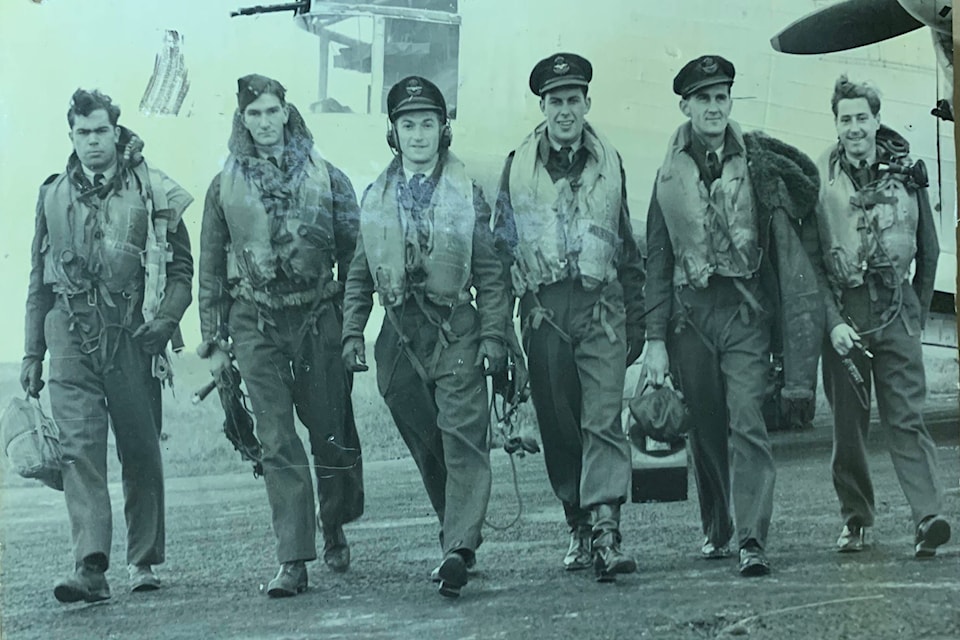Eighty years ago, 407 Long Range Patrol Squadron was created with many responsibilities and different aircraft, but one principle has stayed the same: no matter the mission, the crews of 407 Squadron always get the job done.
Stood up on May 8, 1941 at RAF Thorney Island in England as a Coastal Strike squadron, it was tasked with attacking Axis shipping while flying the Lockheed Hudson bomber. It was in this role that the squadron earned its nickname “Demons” for its aggressive and unrelenting low-level bombing runs, destroying or damaging an estimated 500,000 tons of enemy supplies.
In 1943, it was changed to a general reconnaissance squadron and tasked to protect allied shipping from the menacing wolf packs of German U-boats, flying the behemoth Vickers Wellington bomber. Until the end of the Second World War, the “Demons” wreaked havoc on the U-boats, sinking four and damaging seven, thus helping to keep the vital supply lines from North America safe. It was here during the Battle of the Atlantic that the “Demons” lived up to their name.
The squadron was disbanded on June 4, 1945 following the end of the war but reactivated on July 1, 1952 in its current home of Comox as 407 Maritime Reconnaissance Squadron.
Flying the Avro Lancaster Mark 10 MR, its primary mission was anti-submarine warfare along with search-and-rescue and national sovereignty patrols. In 1958 the “Demons” traded in the Lancaster for the CP-122 Neptune, an aircraft specifically designed for anti-submarine warfare.
In 1968, they traded the Neptune for the CP-107 Argus, a Canadian-made aircraft with improved sensors and endurance. This allowed the squadron to begin patrolling the vast expanses of the Canadian Arctic. In 1974, a 407 crew flew a maritime patrol from Comox to the Aleutian Islands and back at a time of 31 hours and six minutes, setting a world record for the longest un-refueled flight and putting 407 Squadron in the history books once again.
On June 11, 1981 the “Demons,” now designated as maritime patrol squadron, entered the era of computerized warfare and took possession of its current workhorse, the CP-140 Aurora. A combination of Lockheed’s P-3 Orion and S-3 Viking aircrafts, the Aurora brought with it state-of-the-art reconnaissance, surveillance and anti-submarine capabilities. This made 407 Squadron one of the most versatile squadrons in the Canadian Armed Forces, able to conduct a multitude of missions like anti-submarine and anti-surface warfare, search-and-rescue, sovereignty patrols, maritime interdiction, assistance to law enforcement and overland reconnaissance.
The squadron routinely works with allied and partner nations as well as other Canadian departments like DFO, the RCMP, the Coast Guard, Transport Canada and NORAD.
Some of its current operations include counter-narcotics enforcement off Central and South America, sanctions enforcement around North Korea, searching for illegal and unregulated fishing in the Pacific Ocean, counter-smuggling patrols in the western Indian Ocean, search and rescue missions at home, enforcing sovereignty along Canada’s west and north coasts, and tracking submarines all around the world.
From the North Atlantic to the Pacific Ocean, Afghanistan and Iraq to the Indian Ocean and East China Sea, the “Demons” are the eyes and ears of Canada’s military and after 80 years, they still get the job done.
- Capt. Ian Paone/Canadian Forces
